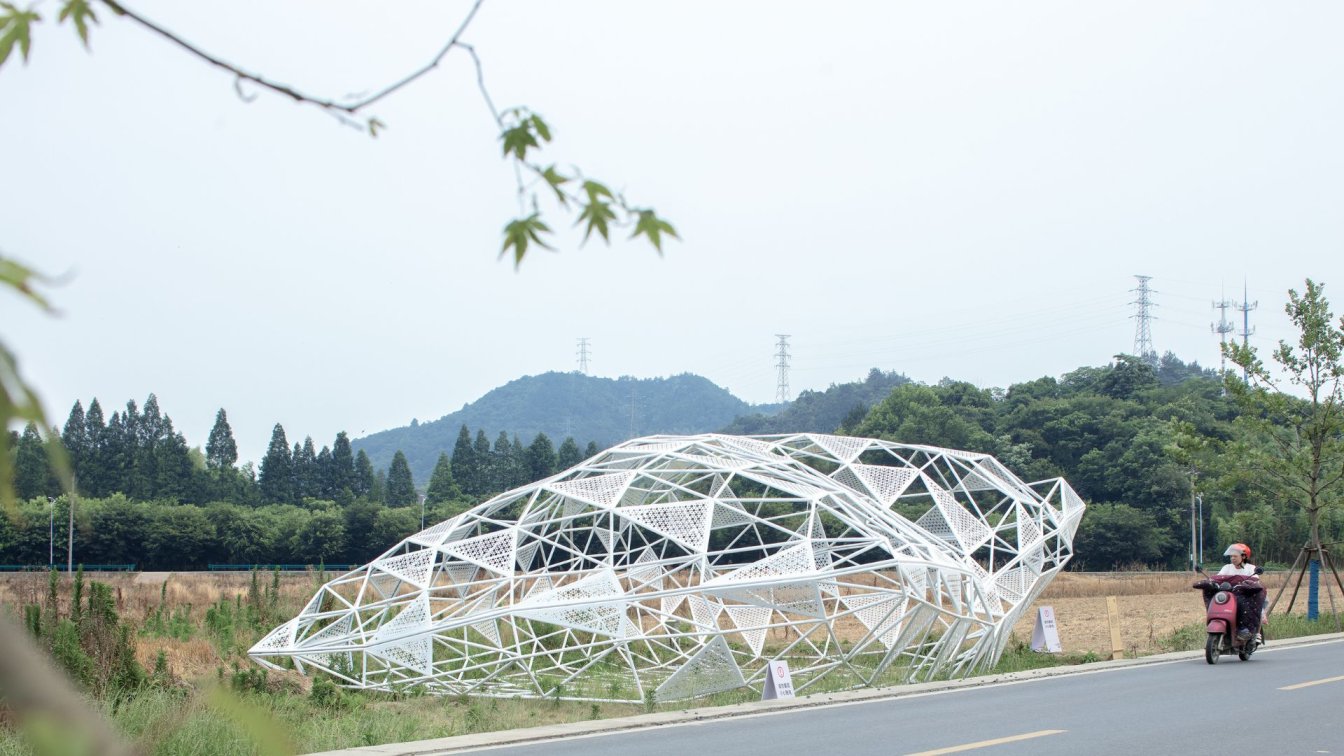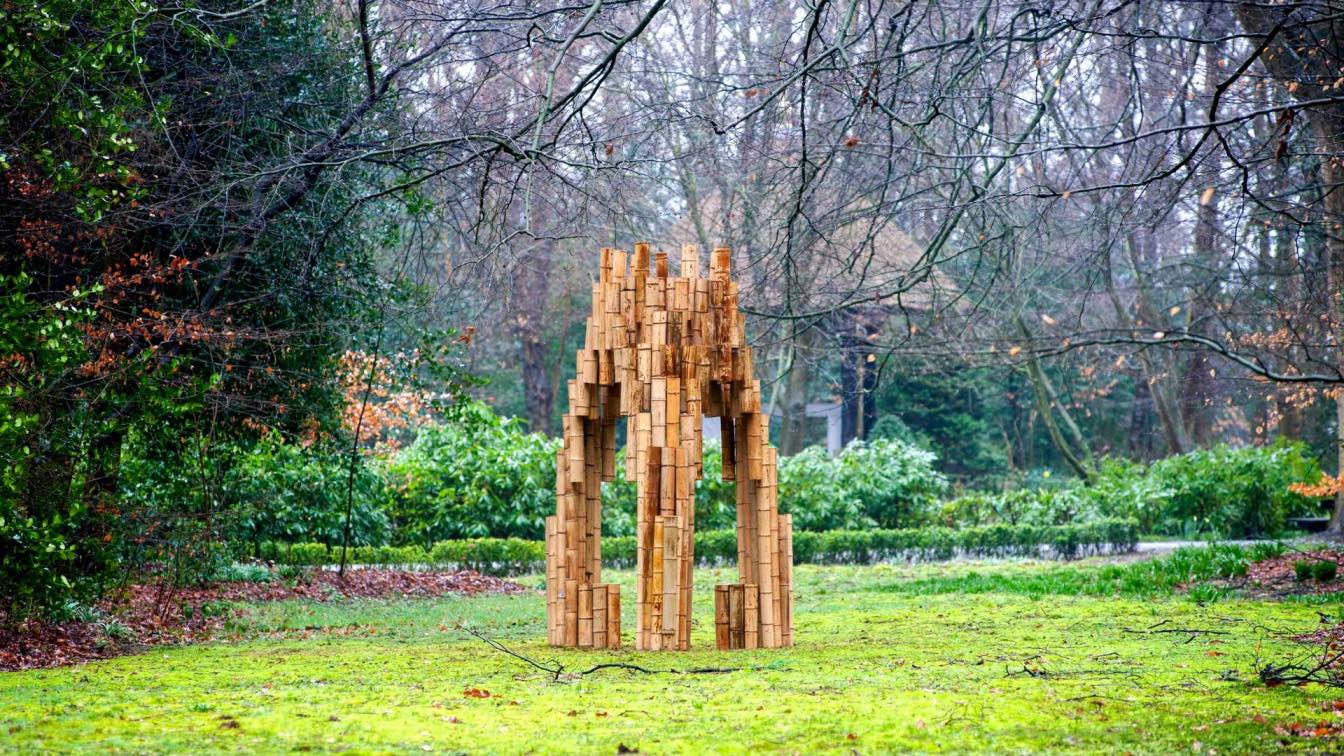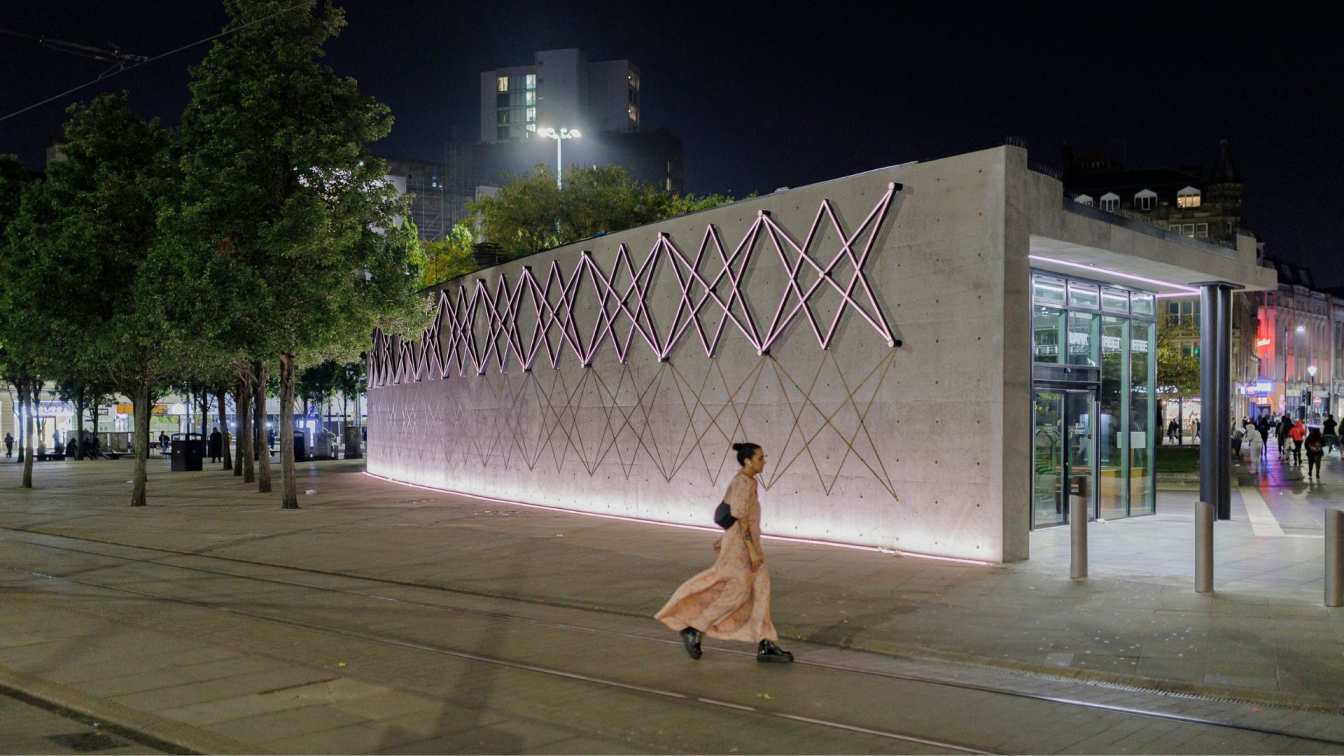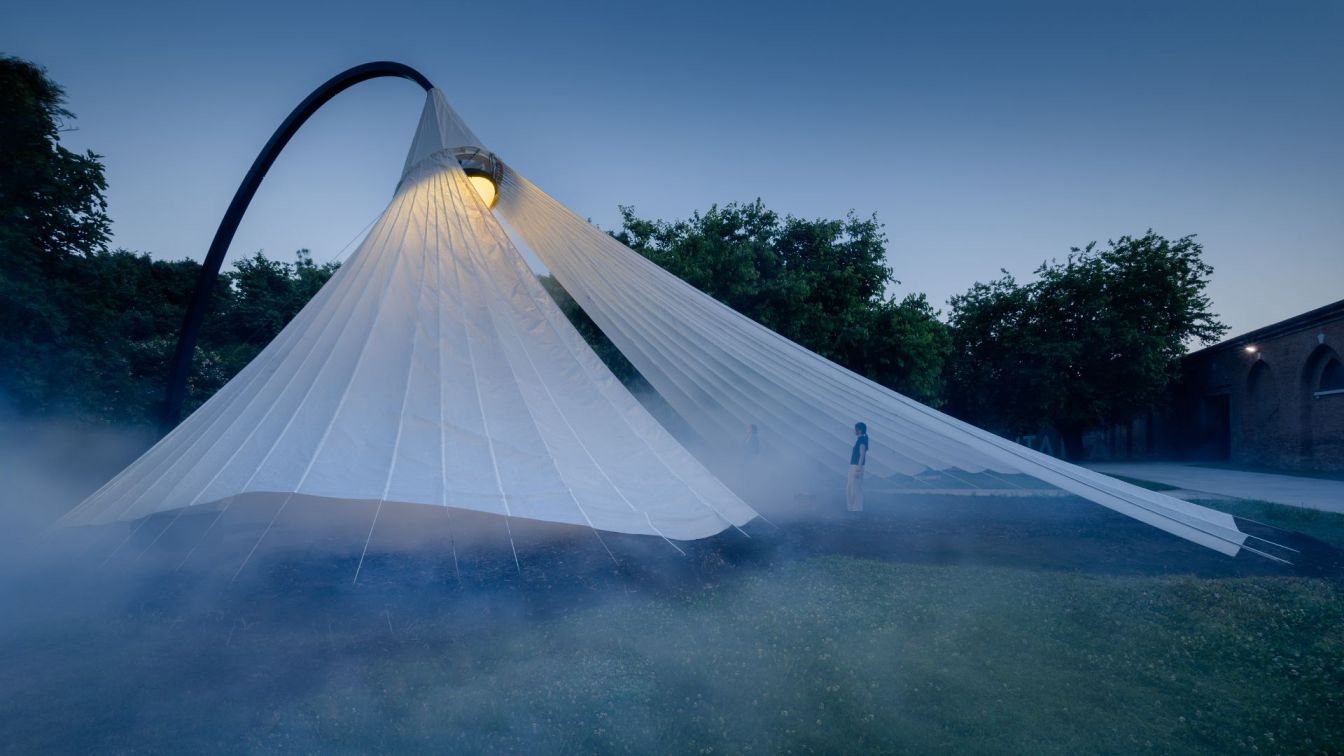The founder and lead architect of Penda China, Sun Dayong, has created a work called "Dream" which will be unveiled during the first Qingshan Public Art Festival in 2023. The work has taken form based on his adherence to green environmental values, a lifelong passion for design, and a belief that architecture should provide spatial and psychological comfort to its users – all of which has led to his philosophy that “Less is Love”. Through advocating works which express concern for people’s well-being and the environment in which they exist, he has created a series of recent projects which have been widely recognized by the architectural community and beyond.
The first Qingshan Public Art Festival brings contemporary art to rural Qingshan Village, under four curatorial sections comprised of "Public Art", "Natural Theater", "Live Sound", and "Local Connection". The different sections variously support the experiences of seeing, hearing, traveling, and learning, to build new connections between the public, art, and nature. Selected by curator Jiang Jian to be the first piece exhibited in the village, "Dream" effectively opened the festival, while simultaneously opening its “Local Connection” section as well.
Sun Dayong's piece takes the natural environment and cultural landscape of Qingshan Village as a starting point, and aims to embody the various contemplative experiences envisioned by the festival. To quote the philosopher Kant: " Two things fill the mind with ever new and increasing admiration and reverence - the starry heavens above me and the moral law within me.“

The dome of the sky is a cover, the wheat fields are woven mats, and the green hills are like tents in the distance: an expansive vista of ten thousand acres of fertile land and the tranquil atmosphere provide the setting for ”Dream”, a landscape installation inspired by the form of a pillow, providing visitors with an opportunity to interact and immerse themselves in an experience which bridges art and nature.
Within the 15.6-square-kilometer rural area of the festival, various countryside settings such as lawns, bamboo forests, and reservoirs can be found in varying proximity to the installation.
"Dream" was designed to be placed in local fields: taking into account the operating range of construction equipment and the need to protect crops and the natural environment, the location of the work has been changed several times, and finally settled in several selected farmland sites. Adjacent to the road, away from any trees, wheat seedlings stretch into the distance, providing an immersive and intoxicating setting for the work, while also suggesting an atmosphere of calm relaxation.

The work appears in the form of a large spatial and metaphorical pillow, which seems to grow from the soil and provides a heightened experience of the space which it encompasses and is surrounded by. Whether immersed in conditions of clouds, rain, sun, or fog, it resonates with the sky and the earth, creating an appealingly human-scaled space with a visceral connection to the natural environment.
The detailed lace pattern of the "pillow" has been created through parametric design with welded metal, giving the work a gentle, fabric-like texture, which results in rich, constantly changing shadows under the shifting sunlight. When visitors enter the interior of the work and experience the difference from an external view, the changes bring an aesthetic quality to the structure’s atmosphere and suggest infinite views of the landscape.
In the evening, with the sky as quilt and the ground as bed, the pillow invites visitors to lie down, gaze at the stars, and listen to the wind, immersing themselves in the beauty of nature. The work offers a place of gentle sanctuary, encouraging visitors to feel a connection to nature through the body, and to bring one’s thoughts into a state of peaceful contemplation.

"When I first came to the venue, I saw the green hills in the distance as forming the background, and the wheat stretched as far as I could see. I had a kind of reverie at that moment. I felt the desire to lie down there in the evening by myself, quietly watching the stars and listening to the insects in the fields. So when I conceived the project, I used the theme of a dream to create a large "pillow" installation, which would encourage people to pause, and take in their surroundings in a more measured way." - Sun Dayong, founder and principal architect of Penda China
In "Dream", public space is endowed with emotional import, and visitors are encouraged to discover the beauty of nature, and to appreciate their own vitality in the symbiotic relationship between humanity and nature.
The aesthetic experience provided by the work allows the viewer to return to the dream of coexistence with nature, gently and comfortably. Its intention is to impart the realization that no matter what situation they face, visitors must have dreams in their hearts and the will to pursue them. In love and nature, they will always be able to find spiritual comfort. "Dream", placed amongst the green hills, has a presence akin to a natural element, spreading and growing upward like a vine; it also recalls a moment in time gently blown by the wind, a quietly dynamic form. The re













































About Penda China
Founded in 2013 and led by Sun Dayong, Penda China is a Beijing-based studio that embraces innovative design. With the international exposure it has gained, the studio is a stickler for ‘LESS IS LOVE’ from an ecological standpoint. We strives to establish an agreeable rapport between individuals and their surroundings while capturing the zeitgeist of art, fashion and architecture. Our multidisciplinary practice covers a wide spectrum from architecture, landscape to interiors, installation art and such, and a variety of functions including culture, residence, hotel, office, transportation, business, and exhibition. Our clients include BMW, MINI (CN), Volkswagen, Vanke, Qihao, China Merchants Property, Kaisa, Wanhua Real Estate and many other famous brands at home and abroad.
Our fashionable, green and innovative designs have garnered us many honours and extended actual influence within a worldwide scene. Hongkun Art Gallery (alternatively known as ‘Hongkun Museum of Fine Arts’), one of our projects, was selected to be one of the ten most popular art galleries in Beijing by Time Out. We were shortlisted four times as one of the most influential Chinese designers by the prestigious Architectural Digest AD100; won the Architizer A+ Award for Emerging Firm of the Year (2016); invited to be one of the ten architects to the 1st House Vision 2018 Beijing Exhibition curated by Kenya Hara; shortlisted for Dezeen Awards 2021 emerging architecture studio of the year. The studio founder was also invited to sit on the jury panel for the international competitions such as eVolo competition and Dezeen Award, making a voice internationally for Chinese architects; and elected to be Person of the Year and Architect of the Year by the renowned magazines TRENDS HOME, Robb Report Lifestyle, etc.
Penda China has won numerous awards at home and abroad. The founder Sun Dayong won the First Prize of the Excellent Graduation Design of graduates in School of Architecture, Central Academy of Fine Arts. Some representative award-winning projects are: Hongkun Art Gallery awarded the Outstanding Public Space of the Golden Bund Award (2014), Home Café awarded the Best Dining Space Design of JINTANG PRIZE (2015), Toby’s Home awarded the Best Leisure and Entertainment Space Design of JINTANG PRIZE (2015), Snow Apartment awarded the Best Residential Interior Design of Architizer A+ Awards (2015); Toby’s Home awarded the Gold Award of A' Design Award & Competition (2016); Rising Canes Pavilion awarded the Silver Award of A' Design Award & Competition (2016), Haikou Wenming East Road Tunnel awarded the World Design Awards (2021), gold award of Global Future Design Awards, The Plan Awards, and nominated for Iconic Awards and Wallpaper* Design Award (Best Infrastructure) etc.
Our design works have been included in numerous exhibitions at home and abroad, including the Start of a Long Journey Outstanding Works by Graduates of 2012 from Key Art Academies in China held in CAFA Art Museum; AIT International Young Architects Design Exchange Exhibition (2012); “ZAO – Architecture of China” in Lyons, France ( 2014); Architecture China 1000, Beijing, China (2015); “10×100 – An Exhibition of 100 Architects” on the 10th Anniversary of UED (2015); Rising Canes Pavilion in Beijing Design Week (2015); “Bi-City Biennale of Urbanism\Architecture” in Shenzhen, China (2015); “Walking Box” of Salone del Mobile (2016); Landscape City Reconstructing Utopia--Architecture and Art Exhibition in Shanghai Himalaya Art Museum (2016); MINI 60 Anniversary, Shanghai (2017); China House Vision, Beijing, China (2018); Urban Co-Habitation in SUPER FUSION 2021 Chengdu Biennale, etc.
Meanwhile, those projects have featured globally acclaimed media, such as Dezeen, Archdaily, Designboom, Domus, Frame, Interior Design, Gooood, Position, INTERIORS (South Korea), CASA (Japan), Wall Paper (UK), GQ, COSMOPOLITAN,, AD, Ideat, TRENDS HOME, Rayli Home, UED, AT, New Architecture, World Architecture Review, and World Architecture, etc.





